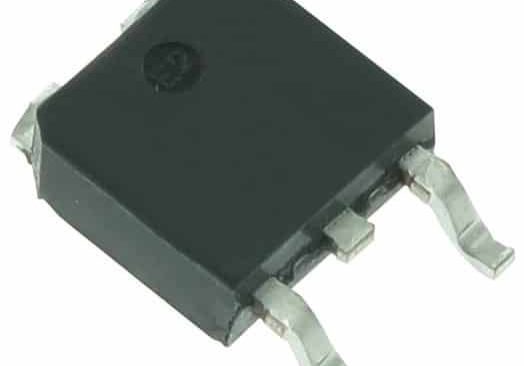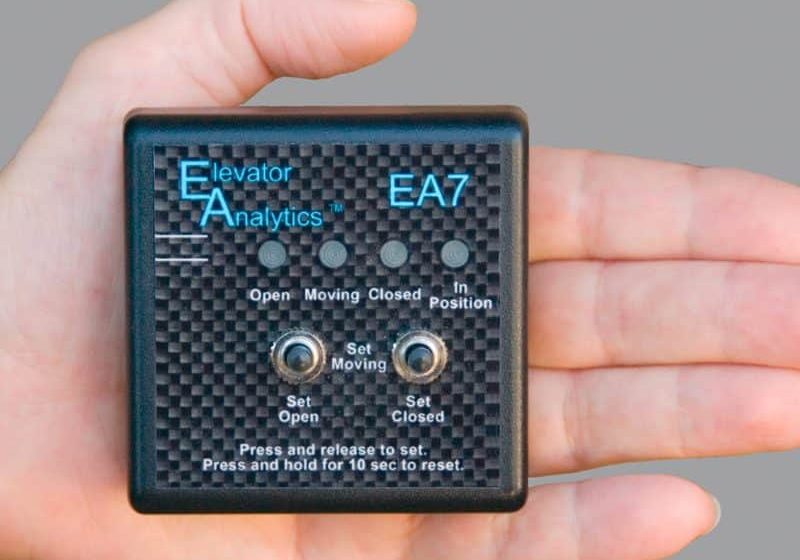Eye on Precision
Oct 1, 2014

Tampa, Florida-based TRI-TRONICS blends progressive production capabilities with traditional business practices.
When researchers at TRI-TRONICS® in Tampa, Florida, were developing the predecessor of the company’s LEADINGEDGE® light-screen elevator door control system in the mid 1990s, they needed a product that was not only high tech, but also tough — resistant to extreme temperatures and water. That was because they were working with the U.S. government agency National Aeronautics and Space Administration (NASA) to develop a system that could withstand thousands of gallons of water being sprayed into the launch area at Kennedy Space Center in Cape Canaveral, Florida, during rocket launches. The water prevented both fire and sound-wave damage — which could have burst pipes, cracked walls and loosened joints.[1] LEADINGEDGE predecessor Magic Edge was used on the Launchpad 39 elevator at Kennedy — the one that took astronauts up to the space shuttle during missions — until 2011, when NASA ended the program.
The technology was subsequently embraced by the Niagara Falls Observation Tower at Niagara Falls State Park in Niagara Falls, New York, a tourist attraction that is literally encased in mist thanks to hundreds of thousands of gallons of water crashing over a trio of falls every second.[2]
Tim Kelley, TRI-TRONICS’ vice president of marketing, said the reliability and robustness of LEADINGEDGE, as demonstrated by withstanding such extreme environments, is one of the factors that sets the company apart from its competition. He said TRI-TRONICS is one of the few U.S.-based manufacturers of light screen door controls. He states:
“We make the very best, robust and reliable edge in the industry. And we make the one and only waterproof edge on the planet. It is literally submersible. We tested it just that way: We put it in a pool when we designed it, and swam through it over a weekend!”
TRI-TRONICS was founded in 1954 by electrical engineer Jim Ahlswede in Oakbrook, Illinois, in a much smaller facility than it occupies today. In the beginning, it was a photoelectric sensor and controls shop with just one full-time employee, Ahlswede, who sold his product to packaging-machine manufacturers and automation-solutions companies, among others. After Ahlswede passed away 1974, his wife, Priscilla, became CEO and, in the mid 1980s, decided to move the company to Tampa. This was around the same time TRI-TRONICS’ elevator-products division was getting off the ground. She became CEO and remained so until she passed away in 2007, passing the reigns to Dave Hacquebord, who became acting CEO. Kelley said the company promoted from within. He notes:
“[Hacquebord] was a part-time technician in the 1960s, an engineer in the 1970s, and became general manager after Jim Ahlswede passed away in 1974. After [Hacquebord] received his MBA, he became president in 1979. He was president and CEO until his passing in April 2010. Scott Seehawer is now president and CEO, as of [Hacquebord’s] passing. He also has an electrical engineering degree, is an MBA and was chief operating officer prior to becoming president.”
The first TRI-TRONICS elevator product was ElevatorEyeTM, sold as an individual and dual system to meet U.S. Americans with Disabilities Act (ADA) requirements. Hard mounted at heights of 5 and 29 in., they are used, in tandem with mechanical safety edges, to enhance protection for passengers in wheelchairs, for example. TRI-TRONICS elaborates:
“You can select ‘individual’ eye systems that fit any door application to back up the mechanical safety edge. The reflectors, mounting brackets, and all hardware are included. They are easy to install and even easier to maintain. They provide dependable operation up to 12 ft. using infrared invisible light and are unaffected by light from other sources. They meet or exceed state and local codes, even ADA requirements, and have the highest quality and reliability. There is an automatic disable timer model available. The ElevatorEye is sealed in a high-impact plastic case, which is dirt and moisture resistant.”
After ElevatorEye, TRI-TRONICS in the early 1990s invented and began manufacturing its EZEdgeTM, a retroreflective — rather than mechanical — door-edge system. Such non-contact sensing revolutionized the elevator industry and improved public confidence, Kelley says. The system consists of:
“A light source and receiver circuits contained in one [housing], projecting a light beams to a reflector mounted on an opposite side. The reflector then returns the light back to the receiver circuit. When the target/object interrupts the light beam path, an output signal is produced. In the case of elevator edges or eyes, the target is normally a person, and the output opens the doors when someone or something is detected.”
As the company upgraded its offerings and grew its customer base, it needed more space. So it bought a 26,000-sq.-ft. facility in 1995. The building, located in Tampa West Industrial Park near the Tampa International Airport, houses offices, manufacturing and assembly. The space has helped lay the groundwork for further growth, such as the January 2012 acquisition of TRI-TRONICS vendor Photocraft Encoders of Elburn, Illinois. Its operations were relocated to Tampa.
Kelley explains encoders count pulses per revolution on disks connected to the inside a mechanical structure. This enables transmission of information to motors, controllers, other sensors, printers and door controls that can regulate speed, for example. They are used in both industrial and elevator settings, he said. “We have had a tremendous response to the product line, and are in new-product development designed to reach new markets and customers in all of our divisions,” he states.
From TRI-TRONICS’ perspective, the main challenges facing the elevator-components industry are:
- Mechanical dimensions have decreased over time, as is the case with most electronic equipment.
- Speed to install and repair has become a bigger factor as labor costs continue to rise.
- The challenge of how to marry new mobile technology to the elevator industry; think of getting a text, email, or phone call when there’s a fault, or when experiencing degrading performance issue prior to an elevator failing.
- The industry redefining a safety product as a commodity/stressing price over performance
TRI-TRONICS has grown to 60 employees, and Kelley believes its focus on meeting unique demands, building products to last and addressing customer concerns promptly and thoroughly is one that will carry it successfully into the future — possibly beyond American shores. Such a move would involve considerable challenges, such as developing an EN 81-compliant code for Europe and amassing adequate ground forces there. “Little differences like whether the edges are fix-mounted or moving with the doors change the design — significantly,” Kelley states. “These are all reasons why we would take our time working on the details of how, when and if we should become a global manufacturer of elevator edges or not.”
References
[1] “Preventing Fires on the Launch Pad,” www.nasa.gov/audience/forstudents/9-12/features/F_Preventing_Fires_on_the_Launchpad.html
[2] “Facts About Niagara Falls,” www.niagarafallslive.com/facts_about_niagara_falls.htm
Get more of Elevator World. Sign up for our free e-newsletter.









